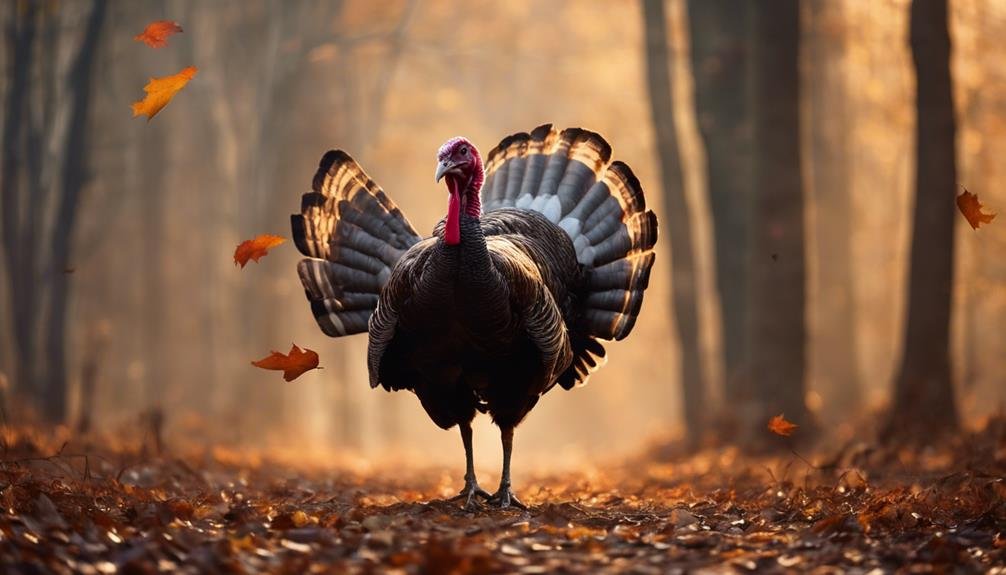Fatal mistakes in the wilderness can have devastating consequences, and even experienced outdoorsmen and hunters can fall victim to a combination of human factors, environmental conditions, and cultural influences that lead to catastrophic accidents. The brain's tendency to misinterpret visual information, complacency, and rush decisions are all contributing factors. Hunters must recognize the role of mental shortcuts and habituation in accidents. By acknowledging the potential for mistakes, hunters can take proactive steps to prevent tragic accidents. Understanding the complex interplay of factors is essential to minimizing risks and ensuring a safe wilderness experience.
Key Takeaways
- Mistaken identities are a leading cause of hunting accidents, often with devastating consequences, and can occur even among experienced hunters.
- The human brain's susceptibility to visual illusions, cognitive biases, and attention limitations can lead to catastrophic mistakes in the wilderness.
- Complacency, rush decisions, and mental shortcuts can be deadly, causing hunters to skip essential safety protocols and make fatal mistakes.
- Maintaining a mindset of caution and humility is essential for hunters to prioritize safety and avoid tragic accidents.
- Prevention is key, and adopting a safety mindset, adhering to protocols, and embracing wilderness ethics can minimize the likelihood of mistakes in the wilderness.
Hunting Accidents and Mistakes
Despite hunting's reputation as a safe sport, accidents involving mistaken identities continue to occur, often with devastating consequences. Experienced hunters, in particular, are not immune to these mistakes. Recognizing that even skilled hunters can make errors, often due to complacency or a lapse in trigger discipline, is crucial. Hunting culture emphasizes the importance of responsible behavior, but accidents still happen. The root causes of these mistakes are complex, involving a combination of human factors, environmental conditions, and cultural influences. By acknowledging the potential for mistakes, hunters can take proactive steps to prevent tragic accidents. Prioritizing caution, humility, and a culture of safety can help mitigate the risks associated with hunting.
The Brain's Deception
The human brain's remarkable ability to interpret and misinterpret visual information in nanoseconds is a critical factor in hunting accidents, where a split-second mistake can have devastating consequences. Our brains are prone to visual illusions, cognitive biases, and attention limitations, making it susceptible to sensory manipulation. We often see what we expect or hope to see, rather than what's actually there. This phenomenon, known as expectancy or confirmation bias, can lead to catastrophic mistakes. In addition, our brains can fill in details to complete a picture, blocking out contradictory information. It's essential for hunters to be aware of these psychological pitfalls, taking extra time to confirm targets and prioritize caution to avoid tragic accidents.
Contributing Factors to Accidents
Complacency can be a silent assassin in the wilderness, as even the most experienced hunters can fall prey to its dangers and overlook critical factors that contribute to accidents. Rush decisions and mental shortcuts can be particularly deadly, leading hunters to skip essential steps in the decision-making process. When under pressure to make a kill, hunters may feel compelled to take shortcuts, ignoring essential safety protocols. This can result in catastrophic mistakes, such as mistaking a person for game. It is vital for hunters to recognize the role of mental shortcuts and rush decisions in contributing to accidents, and to prioritize caution and deliberation in their decision-making processes.
Complacency Kills
Habituation to routine and repetitive tasks can lull even the most seasoned hunters into a false sense of security, creating an environment where complacency can thrive. This complacency can be deadly, as it can lead to a lack of attention to detail and a diminished sense of situational awareness. Overconfidence syndrome can set in, causing hunters to become careless and relaxed, leading to fatal relaxation. It is essential for hunters to recognize the dangers of complacency and actively work to combat it. By staying vigilant and maintaining a high level of situational awareness, hunters can reduce the risk of accidents and guarantee a safe and successful hunting experience.
Caution and Humility Matter
Maintaining a mindset of caution and humility is essential for hunters, as it serves as a safeguard against the devastating consequences of mistaken identities in the wilderness. Hunting egos and the pressure to make a kill can lead to reckless decisions, but moral courage is required to admit when we're uncertain or unsure. It's vital to recognize that even experienced hunters can make mistakes, and humility is key to avoiding tragic accidents.
| Factors | Risks | Consequences |
|---|---|---|
| Hunting Egos | Increased risk-taking | Fatal mistakes |
| Complacency | Decreased caution | Accidents and injuries |
| Poor Light | Misidentification | Tragic consequences |
| Mental Pressure | Impaired judgment | Devastating outcomes |
| Lack of Humility | Overconfidence | Deadly mistakes
Prevention Is Key
Through a combination of education, awareness, and adherence to safety protocols, hunters can substantially reduce the risk of accidents and tragic mistakes in the wilderness. Prevention is key to avoiding devastating consequences. By adopting a safety mindset and embracing wilderness ethics, hunters can minimize the likelihood of mistakes. This includes prioritizing caution, being aware of potential pitfalls, and taking steps to mitigate risks. Hunters must recognize that even experienced individuals can make mistakes, and humility is essential in preventing accidents. By emphasizing prevention, hunters can guarantee a safe and enjoyable experience in the wilderness. By doing so, they can protect themselves, their peers, and the environment, upholding the highest standards of wilderness ethics.
Safety in the Wilderness
In the wilderness, safety is a delicate balance between preparation, attention to detail, and a deep understanding of the complex interplay between human psychology and the natural environment. To have a safe wilderness experience, it is vital to prioritize wilderness etiquette and develop effective survival strategies.
Vigilance is essential: Stay alert and aware of your surroundings to avoid potential hazards.
Preparation is key: Pack essential gear, including first aid kits, navigation tools, and emergency supplies.
Risk assessment is vital: Evaluate risks and make informed decisions to mitigate potential dangers.
Effective communication is vital: Establish a communication plan and stay in touch with your group and emergency services.
Confirming Targets Saves Lives
Confirming targets is a critical aspect of hunting safety, as even experienced hunters can fall victim to the pitfalls of human psychology and misidentify their quarry. A shooter's mindset is vital, as it can make the difference between a successful hunt and a tragic accident.
| Accident Type | Consequence |
|---|---|
| Mistaking a person for game | Fatal |
| Misidentifying targets in low light | Injury or fatality |
| Failing to verify targets due to peer pressure | Devastating consequences |
Target verification is essential to prevent such accidents. Hunters must prioritize caution and humility, recognizing that even experienced hunters can make mistakes. By taking the time to confirm targets, hunters can avoid tragic accidents and guarantee a safe hunting experience.
Frequently Asked Questions
What Is the Most Common Time of Day for Hunting Accidents to Occur?
The most common time for hunting accidents to occur is during rush hour, specifically during dawn patrol, when low light conditions, excitement, and pressure to make a kill combine to increase the risk of mistakes.
Can Wearing Hunter Orange Guarantee a Hunter's Safety?
While hunter orange boosts visibility, it's no guarantee of safety; camouflage risks remain, and the brain's propensity for misinterpretation means orange can be mistaken for brown or green, emphasizing the need for caution and target confirmation.
How Often Do Hunting Accidents Involve Experienced Hunters?
Experienced hunters are disproportionately involved in hunting accidents, often due to the overconfidence factor, where skill complacency leads to a false sense of security, ultimately contributing to tragic mistakes.
What Percentage of Hunting Accidents Are Caused by Human Error?
In the fog of uncertainty, hunting accidents lurk, often shrouded in human error. A staggering 90% of hunting accidents are attributed to human mistakes, with lack of training and misjudging distance being primary contributors to these devastating errors.
Are There Any Specific Hunting Seasons When Accidents Are More Common?
During rut seasons, accidents are more common due to increased hunter enthusiasm and distraction, while adverse weather conditions, such as low light or heavy rain, can further impair judgment and reaction time, increasing the risk of mistakes.
Conclusion
Fatal flaws in perception and judgment can have devastating consequences in the wilderness. A multifaceted approach to mitigating mistakes is essential, as complacency, confirmation bias, and environmental factors converge to create a perfect storm of error. By acknowledging the complexities of human perception and the role of psychological and environmental factors, hunters can adopt a culture of caution and humility, ultimately saving lives in the wilderness. Vigilance and verification are paramount in preventing tragic mistakes.









